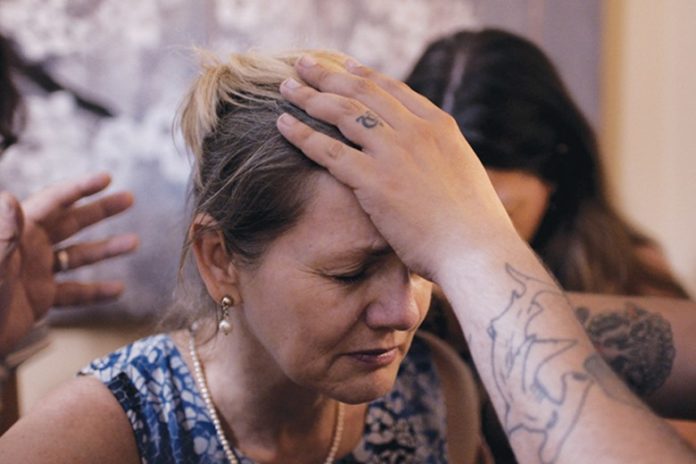A new documentary, “Pray Away,” is now available for viewing from the popular streaming service Netflix beginning this month. The film chronicles the experiences of five evangelicals in the 1970s who come together to form Exodus International, a group that claimed gay people could become straight through prayer and conversion therapy.
Of course, we all know it really doesn’t work that way, but “Pray Away” makes for an informative and thought-provoking documentary that covers a topic you might be shocked to learn still continues. Even in today’s America, according to a study conducted by the Williams Institute at UCLA, an estimated 700,000 people have experienced some attempted method of religion-based or misguided therapy for sexual orientation modification.
Director Kristine Stolakis’ film is an exploration of the history and legacy of the “pray the gay away” or “ex-gay” movement, most often referred to today as “conversion therapy” and debunked by mental health professionals as implausible, irresponsible and potentially dangerous.
In an exclusive interview with qnotes, New York born and North Carolina bred filmmaker Solakis (a former Chapel Hill resident who now makes her home in Mount Clair, New Jersey) talks about her experience and motivation for making the film.

Where did the idea for “Pray Away” come from?
“Pray Away” comes from a personal place. I made the film because my uncle went through conversion therapy when he came out as trans as a child. What followed was depression, anxiety, suicidal ideation, obsessive compulsive disorder and addiction. These are all really common consequences for people who go through some form of conversion therapy. He passed away a few weeks before I went to film school, and I decided I wanted to create a film about conversion therapy.
That type of empathy and support is invaluable. Who have been the biggest supporters of your career?
I’m really lucky to have a really supportive partner and great friends. What I can say is I started this project alone and over the years it’s grown to be a team of people who all have a personal connection to this issue. Filmmaking is really a team sport and I have a great team.
Are you part of the LGBTQ community and have you ever had personal issues with reconciling your identity with religious ideology?
I’ll say this. I identify as straight and have benefited from straight privilege all my life. But on the other side, I’m not convinced that anyone is entirely straight. We live in a culture where we dismiss and pathologize being attracted to someone of the same sex or questioning your gender identity. I have come to believe that straightness does not exist. I really believe, in terms of making films, that you must and should have a true stake in the community you’re covering in making your film. Then it’s your job to want to know more and have a team that supports that. My team is filled with conversion therapy survivors, queer people who were raised religiously and queer people in general.
What was it like gathering all the footage of past events for the film?
It took a lot of work to gather all the footage you see in the film, both archival and observational. It took years. The film took four years [to complete].
The film focuses on Exodus International, a religious organization that promoted the “ex-gay” or “pray the gay away” movement. While working on the direction of “Pray Away,” was there anything you were surprised to learn about these kinds of movements?
One thing I often say is it’s not just the Exodus Movement. When Exodus closed, the “conversion therapy” movement continued. What surprised me in my research was the fact that this is a present tense issue. We know that nearly 700,000 people in the U.S. alone have gone through some version of this. We also know it continues on every major continent. Truly understanding that surprised me and made me even more determined to make a film about this.
“Pray Away” is resonating. Not just because of the subject matter but also because of how you incorporated imagery in the telling of the story. Can you talk a little about the cinematic decisions of using imagery to reify spoken words, like when an ex-chairman was recounting an experience. For example, when he says traveling — viewers see train tracks. When he says he was drinking to intoxication — viewers see an escalator ascending into darkness.
Everything in the film is intentional. We shot that sequence on cameras from that era, using visual language to communicate something thematically. [For instance] the fact that we weave in the visual motif of people listening when you hear people who are claiming to have changed from gay to straight or trans to cis. We always tried to show the audience, onlookers — showing that this is how disinformation spreads. It starts in intimate places; our homes, at a local fundraiser, at your local church, at a bible study, and then reverberates out into our broader culture.
Congratulations on this project, by the way. I understand it’s your feature film debut. What made you decide to take this journey as an art form?
I wish I had a really succinct answer, but it was a very winding and long journey. I circled the dream for a while of admitting to myself that I wanted to make art. I worked in a lot of different manifestations of how art intersects social change, but I really found my calling when I admitted to myself, I wanted to specifically direct film. I think for a lot of women, we haven’t always been given permission to admit that we want to lead, especially something with a large technical component. I think it took me as long as it did because I was afraid of technology. So, it’s a combination of storytelling, research, journalism, cultural anthropology and social justice and social change [that led me to filmmaking].
What’s next for Kristine Stolakis?
I am working on an animated documentary project about the inner lives of middle school girls that will be rooted in one girl’s journey in eating disorder recovery. It will also explore how sexism manifests in the lives of young girls. It touches on themes that have become really important to me like the importance of mental health in our lives and the way large forces of oppression get internalized and taken out on our bodies. In “Pray Away” you see that in the patterns of how self-harm shows up. I’ve learned that eating disorders are the second deadliest mental health disorder only second to opioid use.
Before we let you go, do you have any advice for those who want to enter the filmmaking industry with plans on addressing hard hitting issues like you have done?
My biggest piece of advice for people who want to enter the film industry is first, go for it! There’s no accrediting body telling you — “you are a director” — you have to proclaim it and believe in it. You are your film’s first audience member. If you think a topic is worth investing or exploring, listen to that. Film is filled with rejection, so you really have to hold tight to your voice. That doesn’t mean that you don’t let research change your mind or the process of making art lead you to making a surprising discovery — it just means that you should feel confident in staying true to your point of view to the world and your interest.
Special thanks to Ryan Turrin of The Karpel Group for making this interview possible.
Join us: This story is made possible with the help of qnotes’ contributors. If you’d like to show your support so qnotes can provide more news, features and opinion pieces like this, give a regular or one-time donation today.









